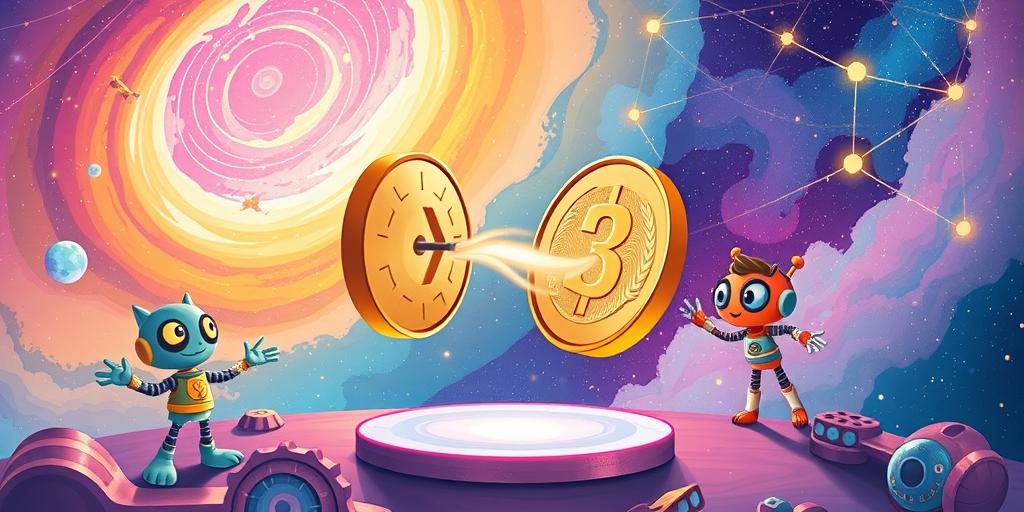Have you ever tried explaining quantum computing to your kids? It’s like trying to explain the internet to a dinosaur – baffling and seemingly impossible! But fear not, fellow parents! We’re about to unlock the secrets of demystifying this mind-bending subject, making it fun, engaging, and easily digestible for even the smallest of scientists. Prepare to journey into the quantum realm with this ultimate guide – get ready to wow your kids with your newfound quantum knowledge!
Understanding the Basics: Quantum vs. Classical
Let’s start with the fundamental difference. Classical computers, the ones we use every day, store information as bits – either a 0 or a 1. Think of it like a light switch: it’s either on or off. Simple, right? Quantum computers, however, use something called qubits. Now, qubits are far more exciting! They can be 0, 1, or both at the same time! This “both at once” concept is called superposition, and it’s where the magic happens. Imagine a coin spinning in the air – it’s neither heads nor tails until it lands. That’s superposition! This seemingly impossible ability is what allows quantum computers to explore many possibilities simultaneously, making them incredibly powerful for certain tasks. This is one of the key concepts to convey when explaining quantum computing to kids, making the abstract concrete using relatable examples.
Superposition: The Quantum Coin Flip
To really grasp superposition, use the coin flip analogy. Explain that a regular bit is like a coin that’s already landed – it’s either heads or tails. A qubit, however, is like a coin spinning in the air – it’s both heads and tails until it lands. That’s the essence of superposition: the ability to be in multiple states at once. This is a clever way to explain quantum computing for kids and the basic building blocks of this incredible field.
Quantum Entanglement: Spooky Action at a Distance!
Now, things get even weirder (and more fun!). Quantum entanglement is a phenomenon where two qubits become linked, no matter how far apart they are. If you change the state of one entangled qubit, the other instantly changes, too! It’s like having two magic coins that always show the same side, even if you separate them by miles. Einstein famously called this “spooky action at a distance,” and it’s one of the most mind-boggling aspects of quantum mechanics. This is something to keep in mind when explaining quantum computing to kids.
Entangled Qubits: The Magical Connected Coins
To illustrate entanglement, use two coins as an example. Explain that these aren’t regular coins; they’re magical coins linked together. If one coin lands on heads, the other instantly lands on tails, regardless of the distance between them. This illustrates how entangled qubits instantly influence each other, regardless of the distance separating them. This approach to explaining quantum entanglement for kids will capture their imagination!
Quantum Computing Applications: What Can It Do?
So, what are these incredibly powerful quantum computers actually used for? Well, they’re still in their early stages of development, but their potential is immense. They could revolutionize medicine by designing new drugs and materials. They could make artificial intelligence far more powerful and efficient. They could even help us create unbreakable encryption for our online data! Quantum computing isn’t just a theoretical concept; it has the potential to transform the world as we know it.
The Future is Quantum: A World of Possibilities
Quantum computers are like having a superpower. The applications are limitless, ranging from finding cures for diseases to developing new, safer materials and even cracking codes that are currently impossible to break. This is a great point when discussing the fascinating world of quantum computing with kids, igniting their curiosity for future possibilities.
Making it Fun for Kids: Games and Activities
To make learning about quantum computing engaging, try some fun activities. You can use building blocks to represent qubits and show how they can be in multiple states at once. You can also play games that simulate superposition and entanglement. The key is to keep it simple, fun, and interactive. Remember to adapt your explanation based on the age and understanding of your child. Don’t be afraid to get creative and use analogies that resonate with their interests.
Interactive Learning: Making Quantum Computing Fun
Keep the learning fun by using games, building blocks, and other interactive activities. Remember, explaining quantum computing for kids doesn’t have to be boring; you can make it an adventure! Try using visual aids, analogies, and hands-on activities to make the concepts more tangible and easier to grasp.
Get ready to be amazed as your kids grasp concepts that once seemed impossible to explain! And who knows, you might just inspire the next generation of quantum physicists! This field is constantly evolving, so staying curious is key. Keep exploring the wonders of quantum computing together!




